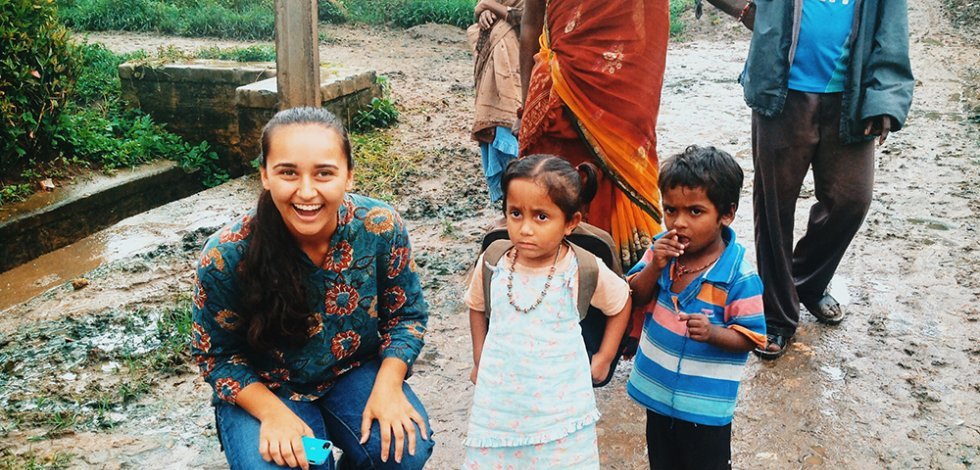USC student discusses debut novel, inspirations

When students are asked to share a fun fact about themselves on the first day of class, stories of broken bones, zany childhood mishaps and adventurous vacations typically popcorn the room.
But Chandra Lee Ingram, a junior majoring in journalism and international relations and the global economy, had a particularly memorable first-day fun fact when she took a class with Annenberg School for Communication and Journalism professor Lisa Pecot-Hébert.
“‘Well, I’ve written a novel,’” Ingram told Pecot-Hébert’s class matter-of-factly, according to the professor herself.
Remembering the event now, Pecot-Hébert recalls during a Journalism Director’s Forum talk with Ingram in Wallis Annenberg Hall Tuesday that she moderated.
“I was like, ‘What?’”
Ingram did not just write a few chapters on a bored summer afternoon; she had fully published her novel “Freedom Child,” which explored the phenomenon of child slavery in India. She’d been working on the novel since seventh grade.
The story of the book’s creation begins back when Ingram’s family moved to Bangalore (now Bengaluru), in southwestern India, from San Francisco. More disappointed that she would miss Little League than scared about the prospect of moving across the world, Ingram quickly settled into her new life, where she attended an international school and lived in a gated community.
When she left the confines of her sheltered life, Ingram witnessed the reality of her new environment. Outside her gated community, Ingram met a young girl named Krisha, who was about her age. Ingram was confused: Why wasn’t Krisha in school like her?
It was then that Ingram’s mother, who also attended Tuesday’s talk, had to explain to her young daughter the complexities of the caste system, corruption and poverty in India. Krisha wasn’t in school because she was a child slave.
Recalling the horrors she saw once she decided to learn more about slavery in her new country, Ingram began to cry in the middle of her discussion with Pecot-Hébert. She recalled learning about children who were abducted at a critical age.
“I started writing when I was the same age as them,” she explained.
When she returned to the U.S., Ingram was startled by how few people knew about modern day slavery, a phenomenon occurring not just in India but all around the world.
Ingram then began what would eventually become “Freedom Child,” typing away in her middle school bedroom.
Despite her prodigious start, Ingram said it took her some time to see the power of her voice as an individual. She says her age often proved a barrier, as well as her initial inability to narrow down the stories of all of the people she met in India into a single story.
She said she intentionally chose to focus on a single narrative.
“I wanted to inspire and create change by writing a coherent narrative,” Ingram said. “We as humans tend to shut out what makes us uncomfortable.”
Eventually, she decided to write about two fictional young girls, Mukti and Ruchita, former friends who were both enslaved. She’s now working on a sequel, which will focus on boys in the bondage system.
“I put myself in their shoes because I could have been in their shoes,” Ingram said. “Any of us could have.”
Sometimes, Ingram admitted, she felt as if it wasn’t her story to tell. In these moments, she had to recognize her immense power and privilege.
“My privilege is my voice,” Ingram said. “[I saw that] girls and boys my age didn’t have that voice. I can’t save every boy and girl. I can give them a voice.”

